Abstract
1. Measurements of total evaporative water loss (EWL) were made on sixty-three premature and full-term babies 0-65 days after birth within a closed Perspex chamber under varied environmental conditions by measuring the flow and absolute humidity of air entering and leaving the chamber. Control experiments suggested that the method underestimated loss by about 5%. Measurements of O2 consumption were made concurrently by recording the volume change of the closed gas circuit.
2. The total basal EWL averaged 10·8 g H2O/m2.hr in infants 2-10 days old when ambient water vapour pressure (PH2O) was 18 mm Hg; basal EWL was correlated with basal metabolic rate at all ages studied and evaporative heat loss accounted for ∼ 23% of basal heat production.
3. Respiratory water loss was measured by detecting the water added to air at 33° C passed across the face of eight infants in a trunk plethysmograph. Respiratory water loss was inversely related to the water vapour content of the inspired air; gas appeared to leave the nose ∼ 95% sat. at 35·6° C.
4. Measurements of total EWL were obtained when humidity was varied and skin loss was calculated by subtracting estimated respiratory loss from total loss; changing PH2O from 7 to 25 mm Hg appeared to decrease basal skin water loss by only 1·5 g/m2.hr.
5. No consistent changes in EWL were obtained when environmental temperature (TE) was varied between 28 and 34° C. Active sweating occurred in infants 0-10 days old born within 3 weeks of term when TE exceeded 34-35° C and rectal temperature (TR) rose above 37·2° C. The threshold rectal temperature at which sweating was detected fell significantly in the first 10 days of life; EWL increased two to fourfold when TR rose to between 37·5 and 37·8° C.
6. In infants of less than 215 days post-conceptual age (term ∼ 268 days) EWL increased less than 50% at TR 37·7-37·8° C; it is concluded that the sweating mechanism is defective in these infants.
Full text
PDF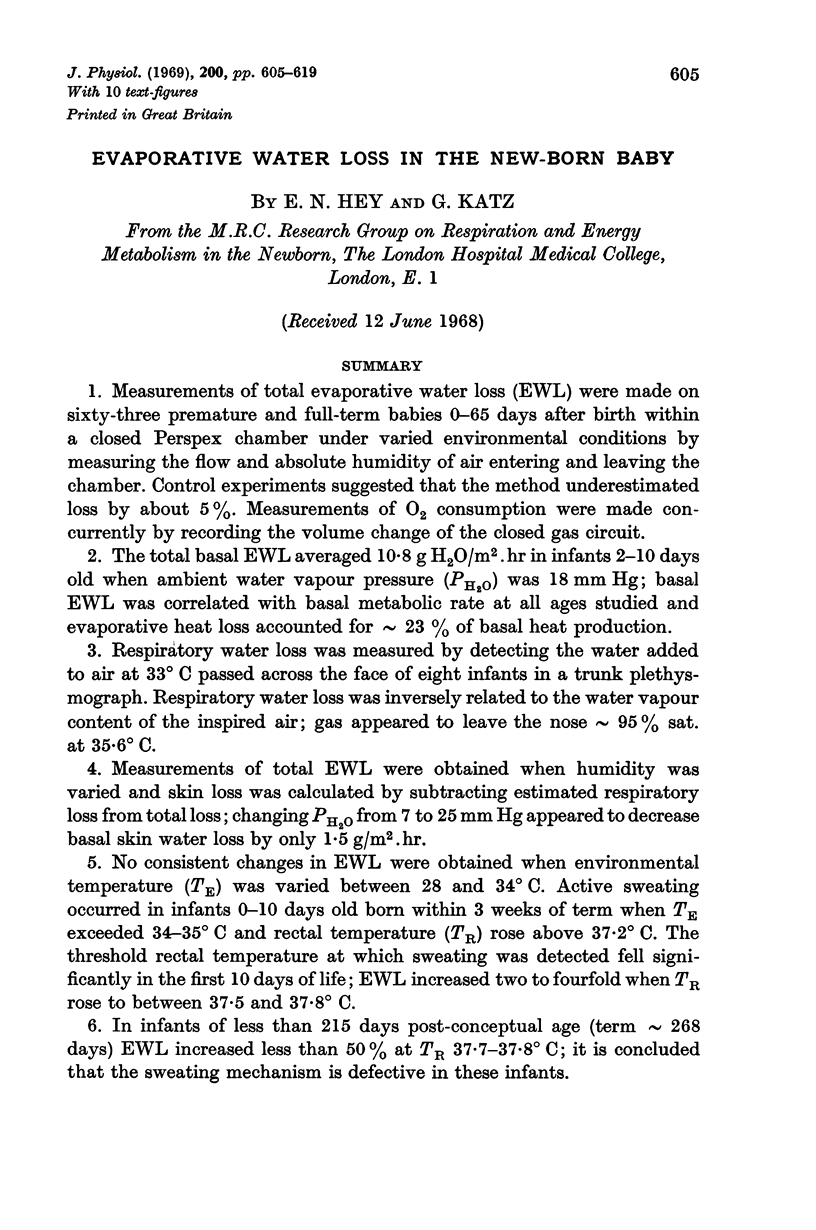
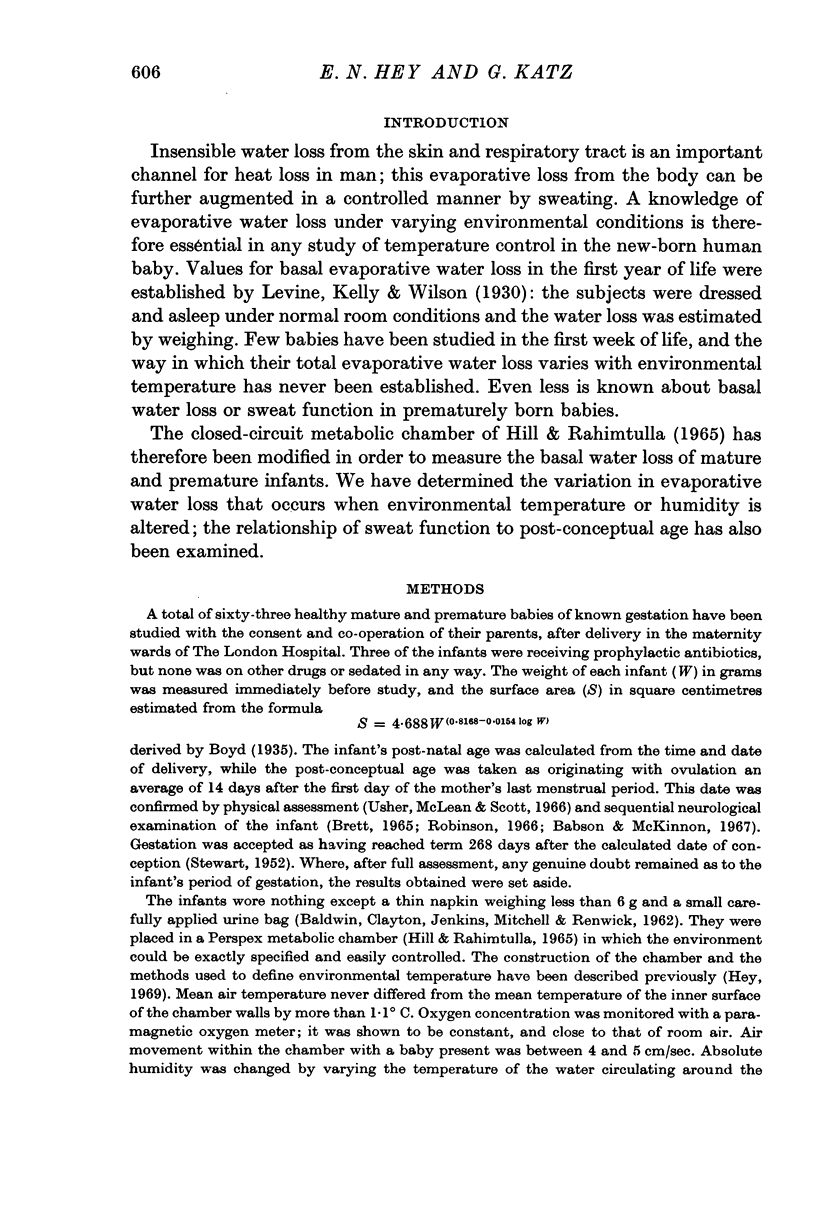
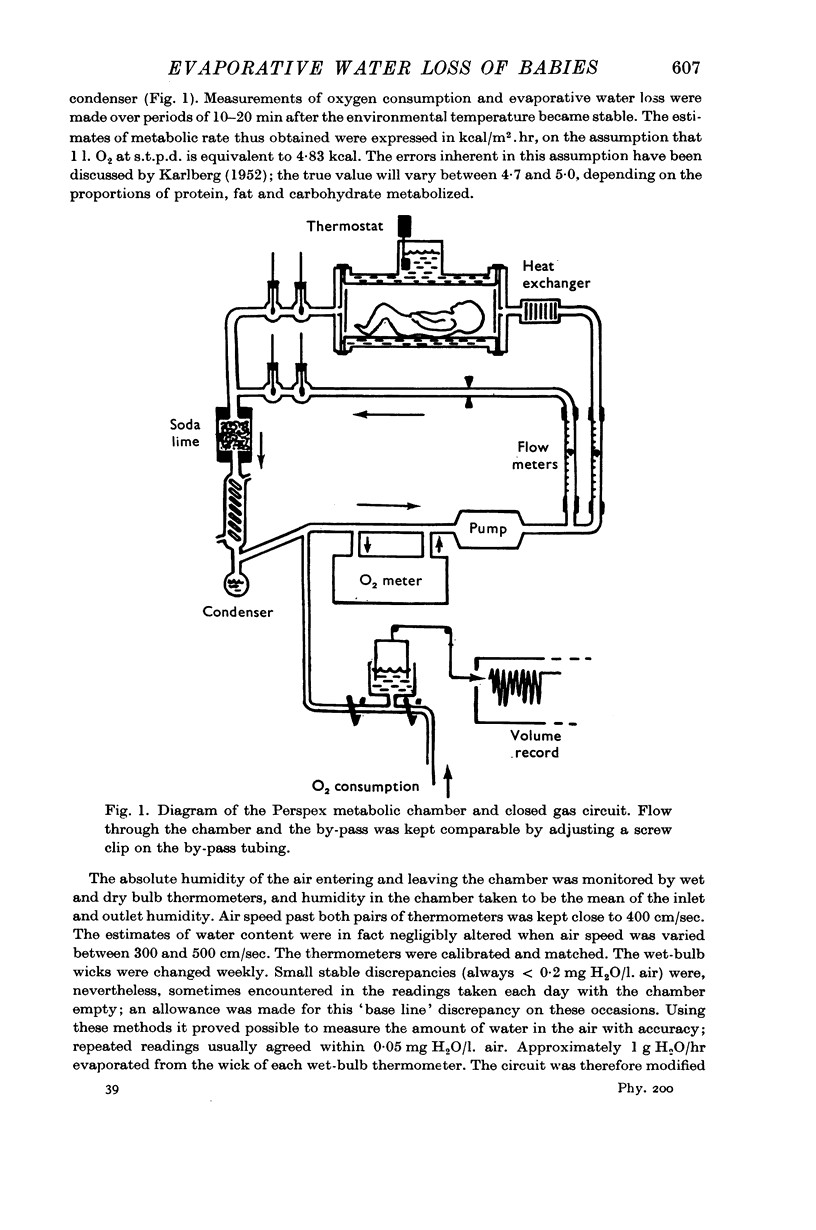
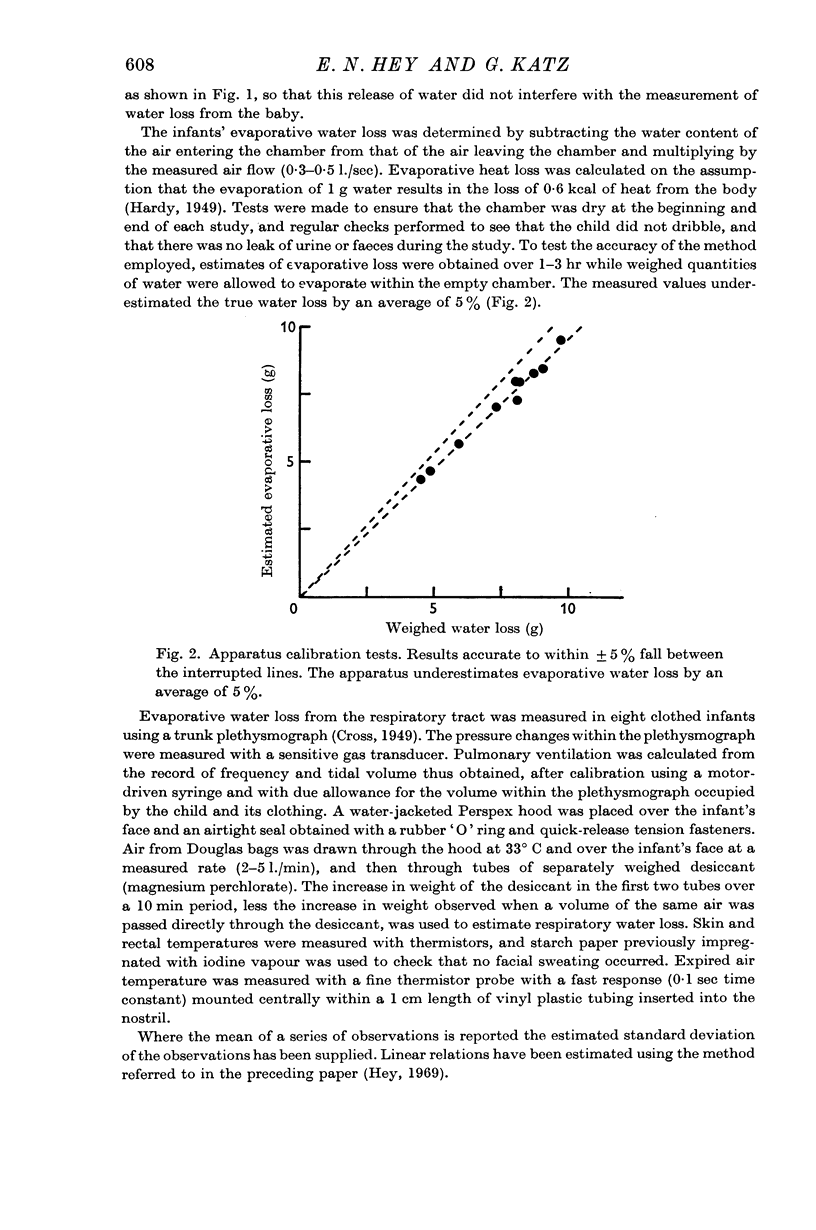
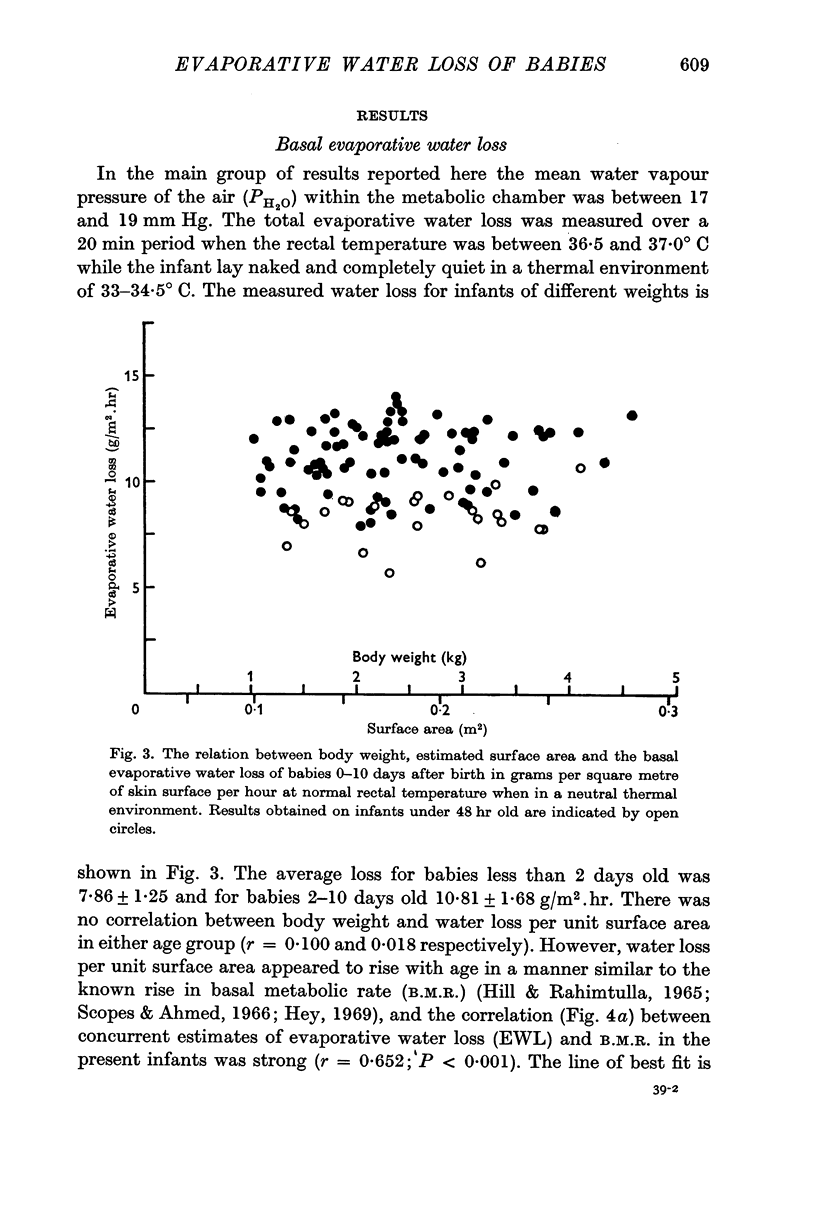
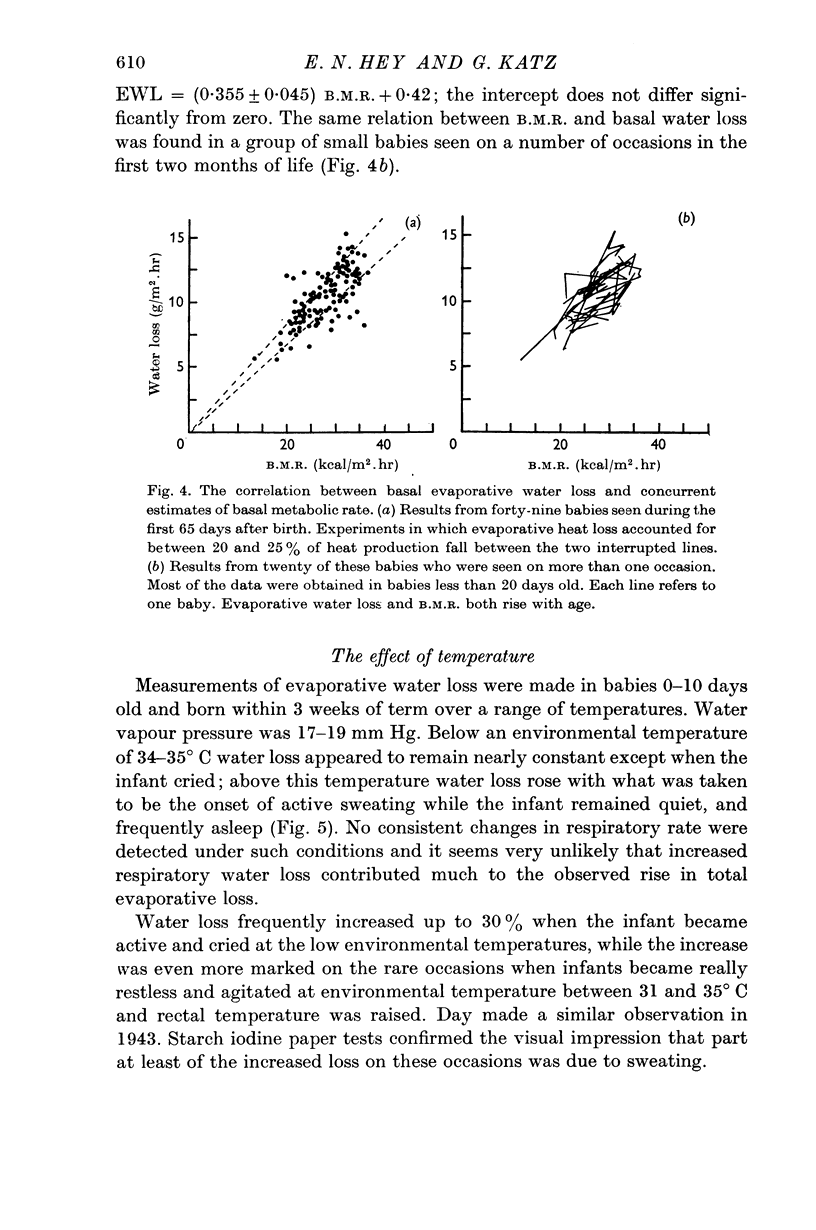

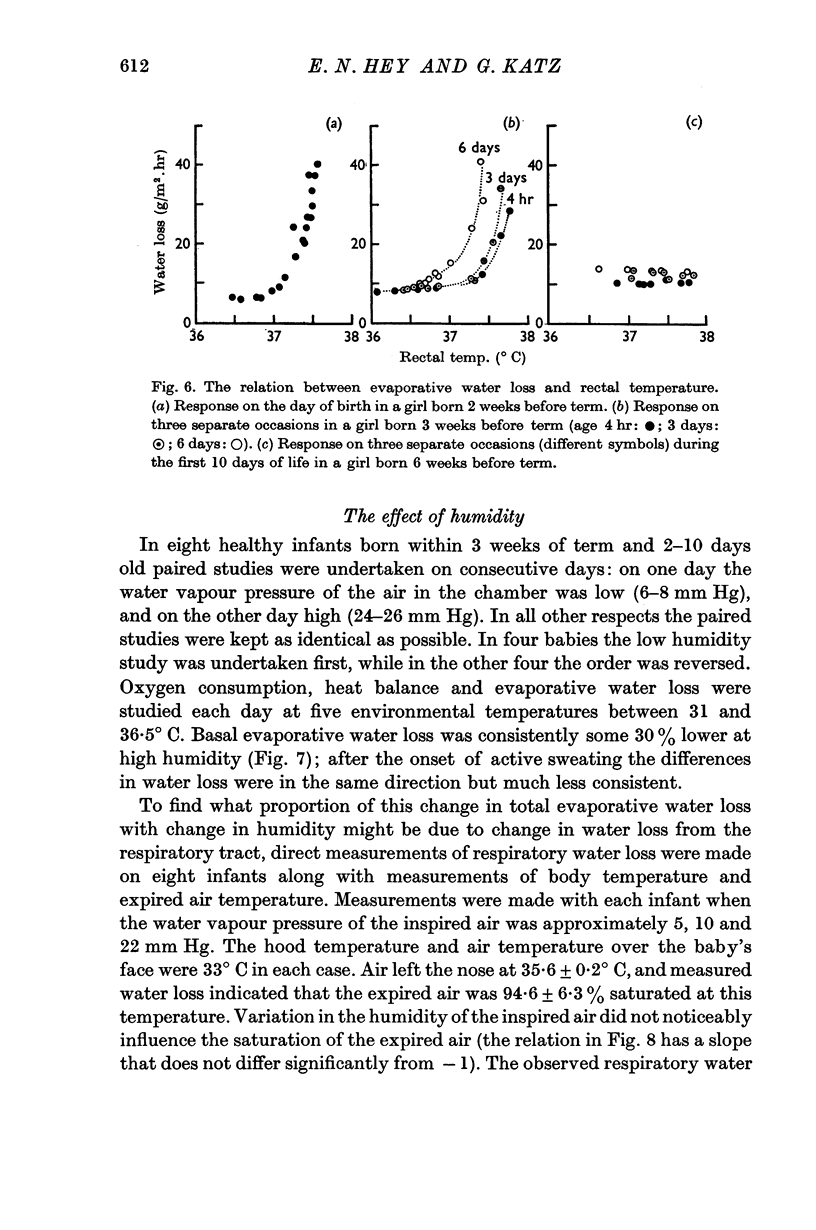
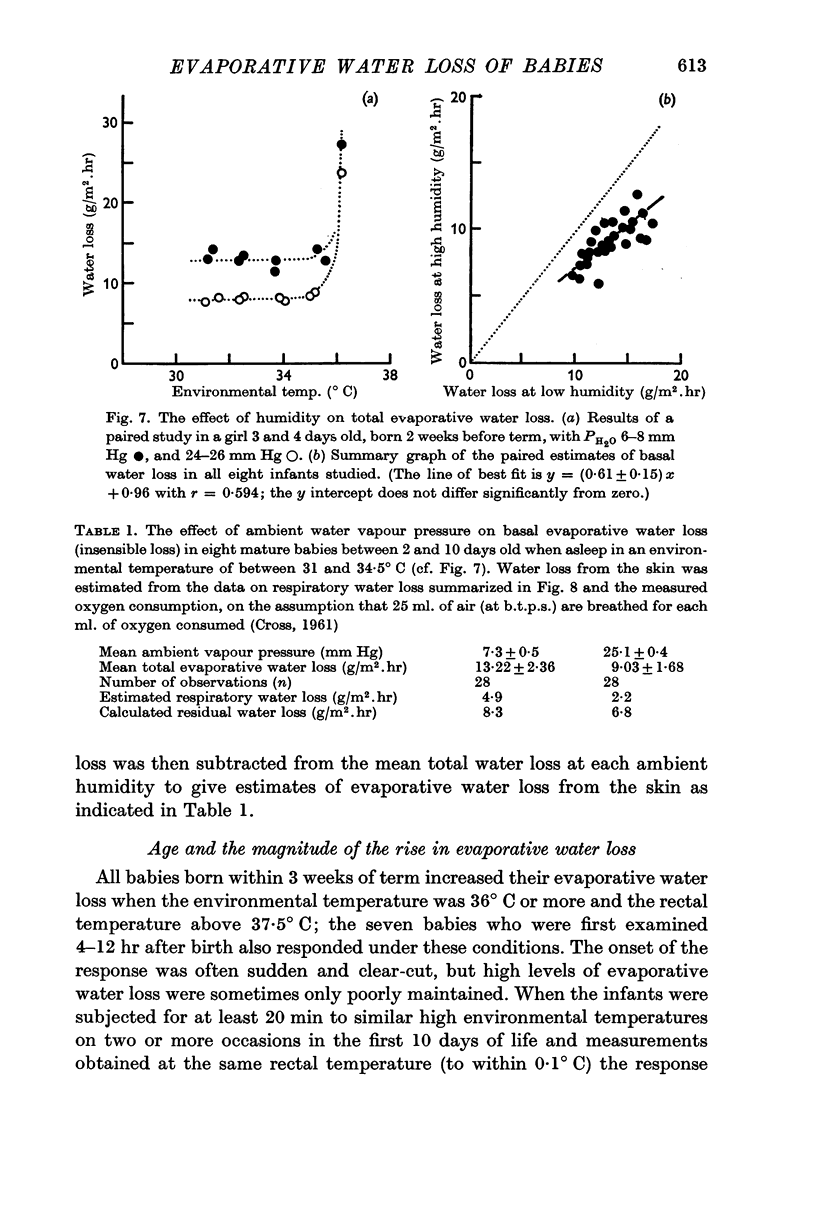
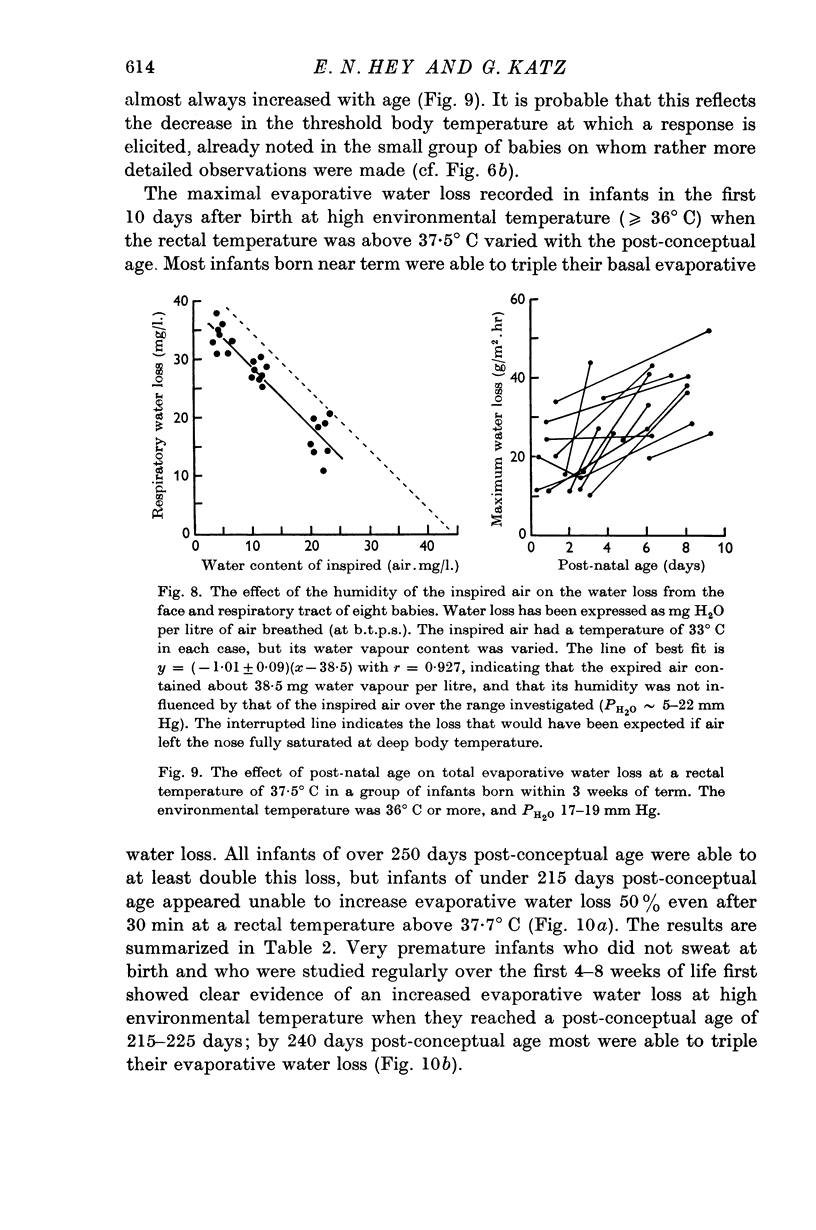
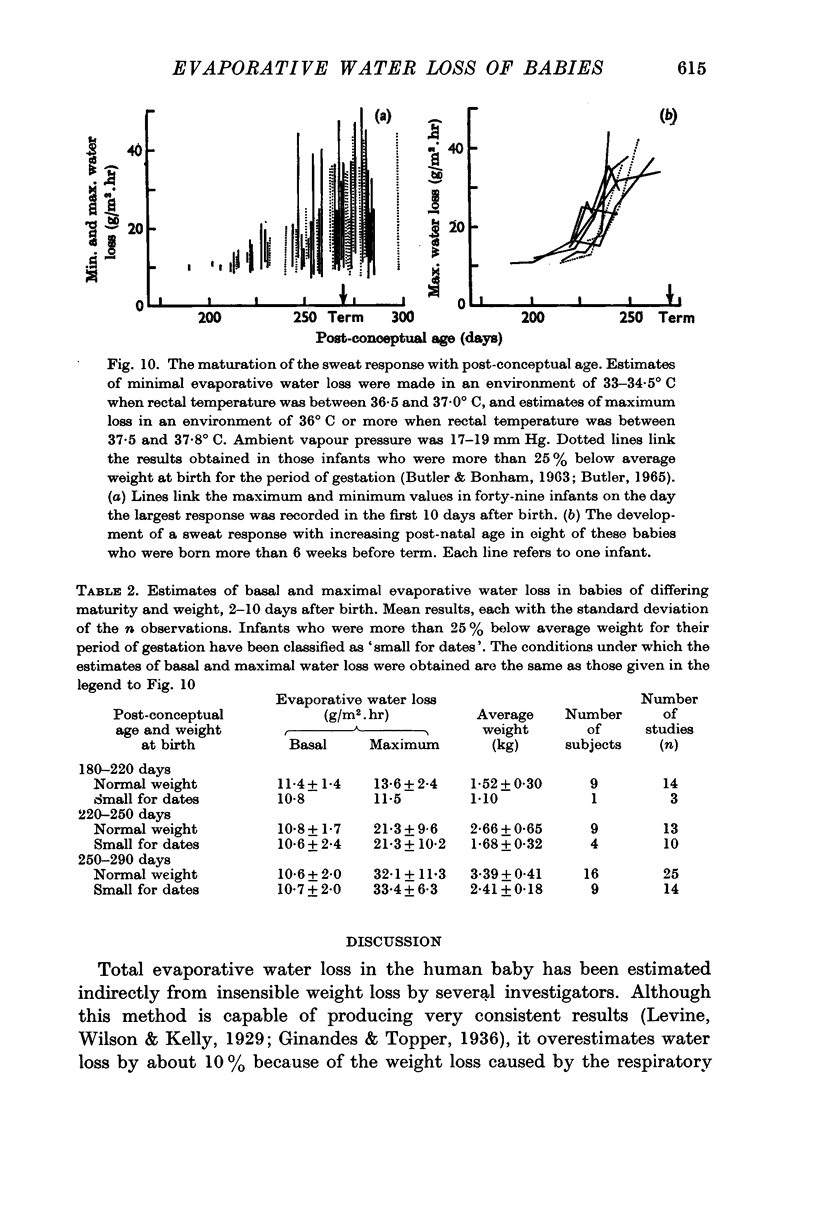
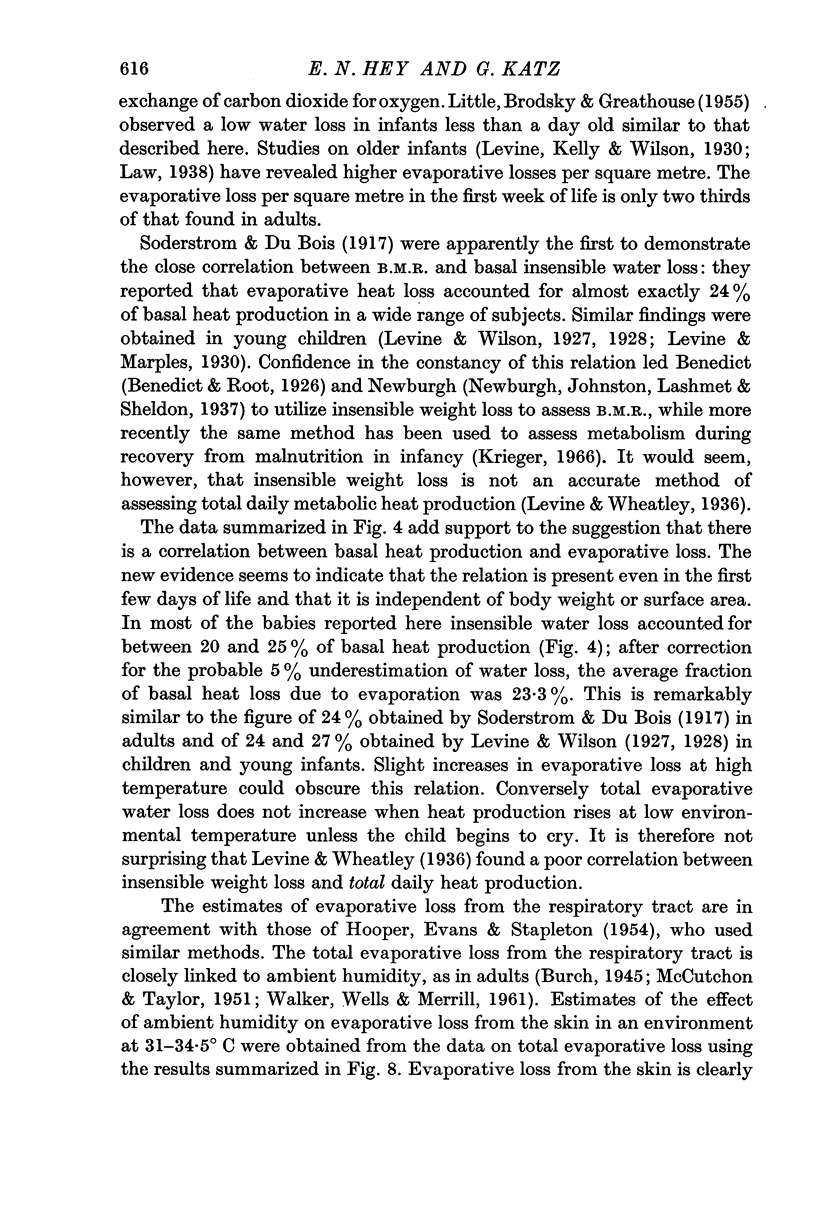
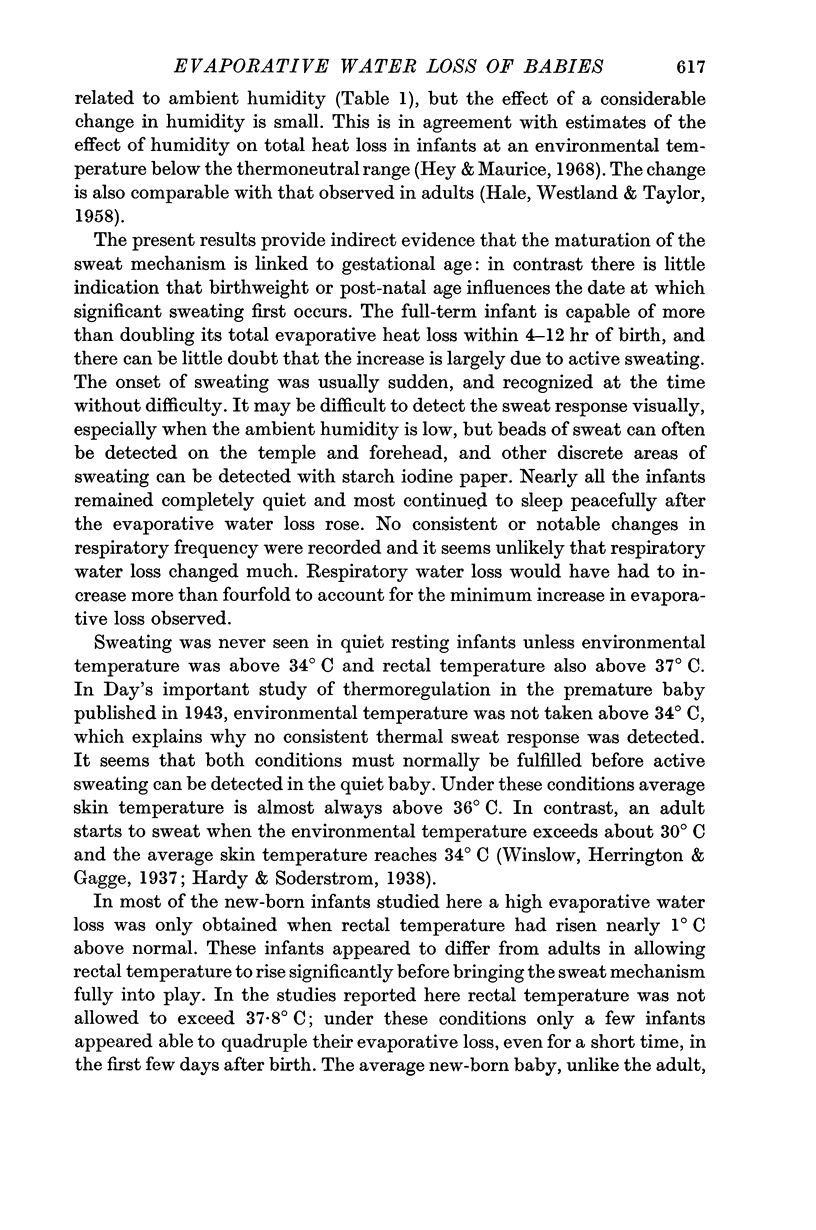
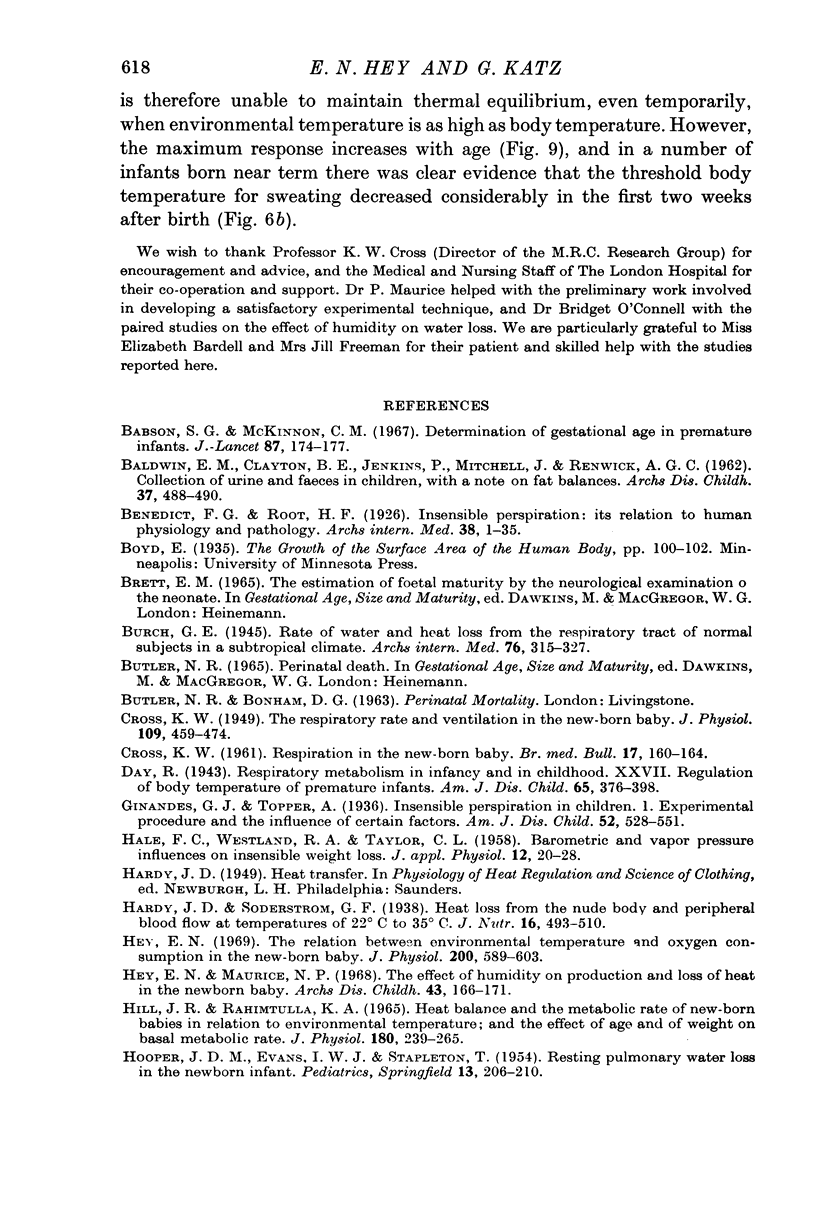
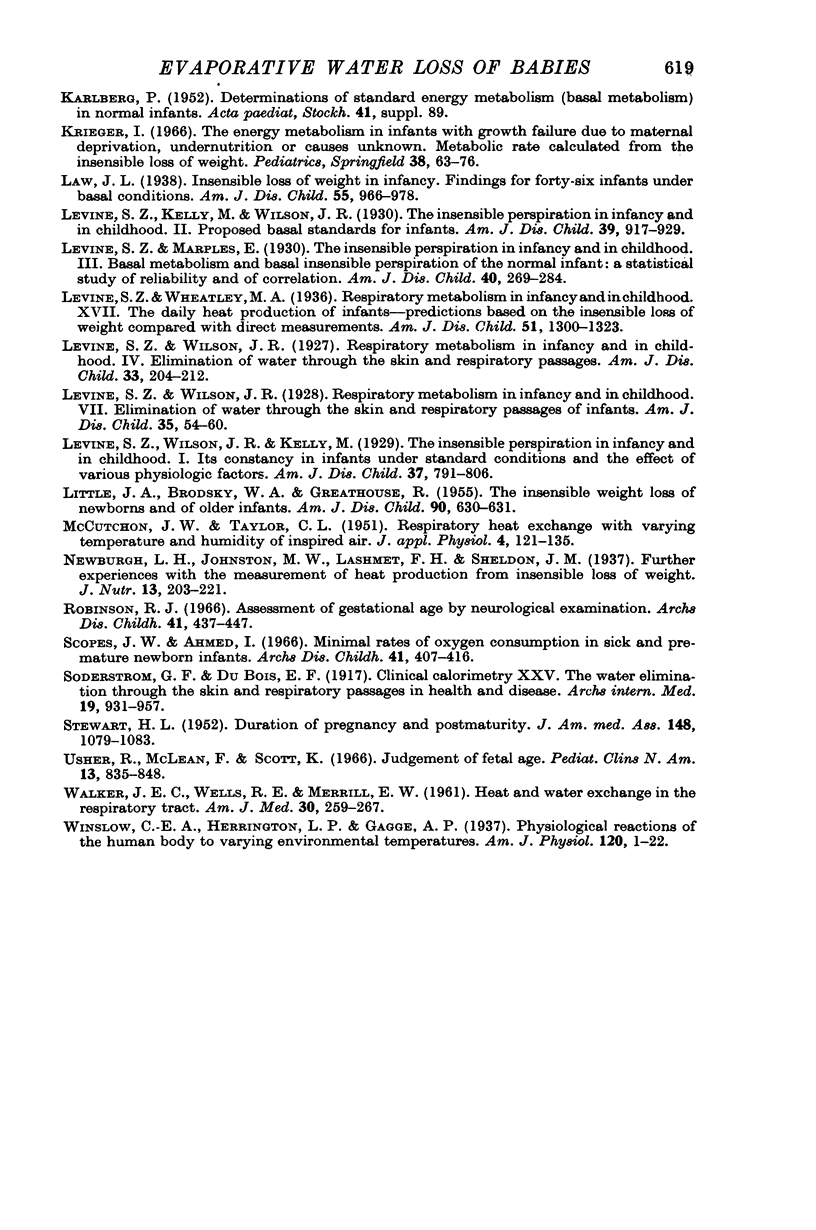
Selected References
These references are in PubMed. This may not be the complete list of references from this article.
- BALDWIN E. M., CLAYTON B. E., JENKINS P., MITCHELL J., RENWICK A. G. Collection of urine and faeces in children, with a note on fat balances. Arch Dis Child. 1962 Oct;37:488–490. doi: 10.1136/adc.37.195.488. [DOI] [PMC free article] [PubMed] [Google Scholar]
- Babson S. G., McKinnnon C. M. Determination of gestational age in premature infants. J Lancet. 1967 May;87(5):174–177. [PubMed] [Google Scholar]
- CROSS K. W. Respiration in the new-born baby. Br Med Bull. 1961 May;17:160–164. doi: 10.1093/oxfordjournals.bmb.a069892. [DOI] [PubMed] [Google Scholar]
- CROSS K. W. The respiratory rate and ventilation in the newborn baby. J Physiol. 1949 Sep;109(3-4):459–474. doi: 10.1113/jphysiol.1949.sp004409. [DOI] [PMC free article] [PubMed] [Google Scholar]
- HALE F. C., WESTLAND R. A., TAYLOR C. L. Barometric and vapor pressure influences on insensible weight loss. J Appl Physiol. 1958 Jan;12(1):20–28. doi: 10.1152/jappl.1958.12.1.20. [DOI] [PubMed] [Google Scholar]
- HOOPER J. M., EVANS I. W., STAPLETON T. Resting pulmonary water loss in the newborn infant. Pediatrics. 1954 Mar;13(3):206–210. [PubMed] [Google Scholar]
- Hey E. N., Maurice N. P. Effect of humidity on production and loss of heat in the newborn baby. Arch Dis Child. 1968 Apr;43(228):166–171. doi: 10.1136/adc.43.228.166. [DOI] [PMC free article] [PubMed] [Google Scholar]
- Hill J. R., Rahimtulla K. A. Heat balance and the metabolic rate of new-born babies in relation to environmental temperature; and the effect of age and of weight on basal metabolic rate. J Physiol. 1965 Sep;180(2):239–265. doi: 10.1113/jphysiol.1965.sp007701. [DOI] [PMC free article] [PubMed] [Google Scholar]
- Krieger I. The energy metabolism in infants with growth failure due to maternal deprivation, undernutrition, or causes unknown. Metabolic rate calculated from the insensible loss of weight. Pediatrics. 1966 Jul;38(1):63–76. [PubMed] [Google Scholar]
- McCUTCHAN J. W., TAYLOR C. L. Respiratory heart exchange with varying temperature and humidity of inspired air. J Appl Physiol. 1951 Aug;4(2):121–135. doi: 10.1152/jappl.1951.4.2.121. [DOI] [PubMed] [Google Scholar]
- STEWART H. L., Jr Duration of pregnancy and postmaturity. J Am Med Assoc. 1952 Mar 29;148(13):1079–1083. doi: 10.1001/jama.1952.02930130007002. [DOI] [PubMed] [Google Scholar]
- Usher R., McLean F., Scott K. E. Judgment of fetal age. II. Clinical significance of gestational age and an objective method for its assessment. Pediatr Clin North Am. 1966 Aug;13(3):835–contd. doi: 10.1016/s0031-3955(16)31885-5. [DOI] [PubMed] [Google Scholar]
- WALKER J. E., WELLS R. E., Jr, MERRILL E. W. Heat and water exchange in the respiratory tract. Am J Med. 1961 Feb;30:259–267. doi: 10.1016/0002-9343(61)90097-3. [DOI] [PubMed] [Google Scholar]


